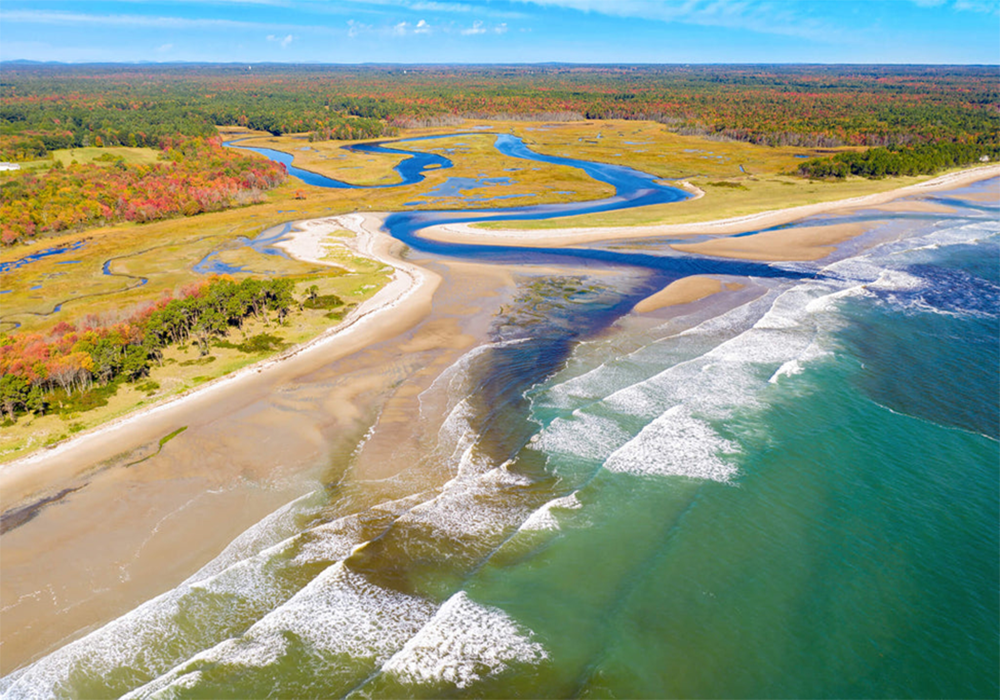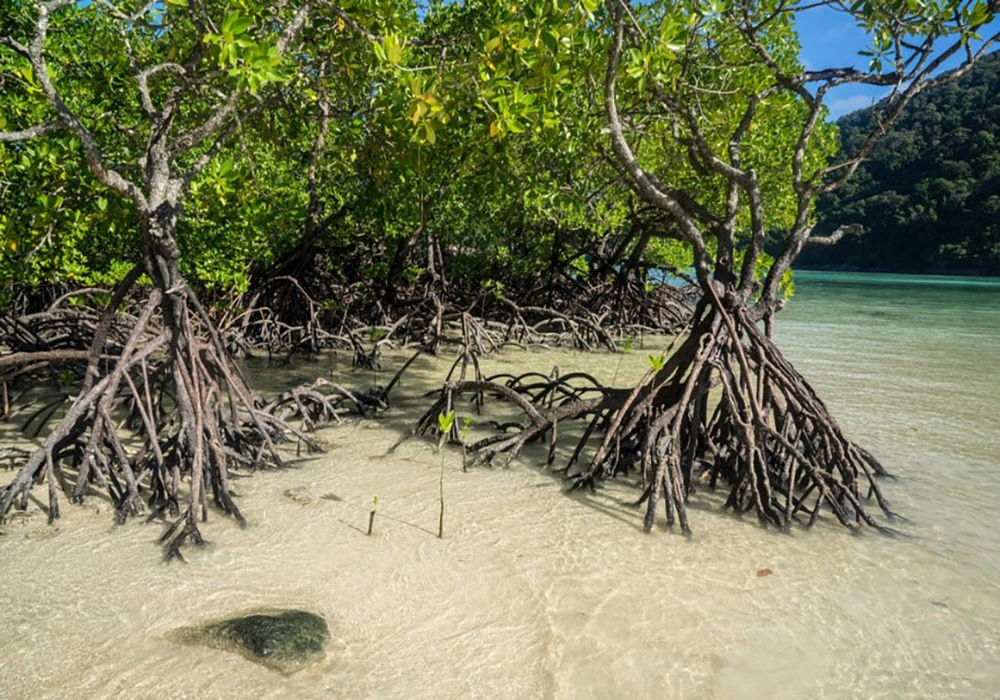Brackish water is a type of water that exists quite a lot on the surface of the earth. Without treatment, brackish water is not drinkable. In this article, Song Phung will provide you with full information about brackish water and how to treat it.

Access to safe drinking water is one of the major challenges today. According to the World Health Organization (WHO), 1 in 3 people in the world do not have access to safe drinking water and the global population is expected to reach 8 billion by 2023, further exacerbating the problem.
Water covers 71% of the earth’s surface, but only 3% is fresh and only about 1% is suitable for drinking. It is clear that there is no shortage of salt water on our planet and the solution to the global water crisis may lie in treating slightly saline brackish water. Brackish water has a salinity between freshwater and seawater, making it significantly easier to desalinate than fresh water.
What is brackish water?
Brackish water is water with salinity higher than fresh water, but not as high as salt water. Salinity is the concentration of dissolved salts in a CBM of water. Brackish water has a salt concentration of 1,000 to 10,000 parts per million (PPM). In contrast, freshwater has a salt concentration of less than 1,000 PPM and seawater has a salt concentration of 30,000 – 40,000 PPM. In addition, the total dissolved solids (TDS) levels of brackish water far exceed those of drinking water. The Environmental Protection Agency’s guidelines for drinking water are below 500 PPM, while brackish water is between 3,000 and 10,000 PPM.
Brackish water is found where a river meets the ocean. The conversion of fresh river water to salty seawater creates brackish water. These areas are called estuaries and are home to a variety of plants and animals adapted to brackish environments, such as mangroves and oysters.

Where is brackish water found?
Brackish water is found in estuaries, lakes, man-made pools and streams, even underground in aquifers. Man-made brackish water sources include wetlands purportedly for shrimp farming; connecting lakes and streams from the construction of dikes…
Finally, brackish water exists underground in deep fossil aquifers. Groundwater can become brackish as a result of ancient seas, due to saline intrusion in coastal regions, or if the water absorbs too many minerals, such as sodium and chloride, as it seeps into the ground. . In fact, about 75% of the groundwater in New Mexico is brackish. Private well water can even be brackish drawn from brackish groundwater. In this case, the water needs to be treated before it can be used.
How do you treat brackish water?
Brackish water is treated through a desalination process. Desalination is a process that removes dissolved mineral salts from salt water and converts it into drinkable fresh water. Reverse osmosis and distillation are the main desalination technologies used to treat brackish water. Seawater can also be desalinated through reverse osmosis and distillation, but due to its higher salt content, is not as efficient as brackish water.
1. Reverse Osmosis
Reverse osmosis is the leading desalination technology globally. Reverse osmosis systems pressurize saltwater and force it through a semipermeable membrane. The membrane’s tiny pores block the movement of dissolved salts and other contaminants but allow water to flow through, converting brackish water to fresh water. One of the largest reverse osmosis desalination plants is in Israel and it can produce about 165 million gallons of fresh water per day.
2. Distillation
Distillation is a desalination method that mimics atmospheric evaporation. The brackish water is heated until it evaporates into steam. Salts and minerals cannot evaporate like water, so once the water condenses and returns to liquid form, it is converted to fresh water.
There are two main distillation methods used to desalinate brackish water: multistage flash distillation and solar distillation. Multistage flash distillation is used in large scale operations, while solar distillation is used in small scale operations and in small communities.
Multi-stage flash distillation
In multistage flash distillation, brackish water is passed through multiple chambers, where it is heated and compressed under high pressure. In each successive compartment, the pressure is reduced, causing the water to boil rapidly. The vapor generated in each chamber is then condensed and collected as fresh water. Saudi Arabia is home to one of the largest multistage rapid distillation systems, and it produces about 200 million gallons of fresh water per day.
Solar distillation
During solar distillation, a brackish water tank is covered by a dome of transparent glass or plastic. Sunlight shines through the cover, evaporating the water and condensing it on the cover. The condensate, which is fresh water, then flows from the lid into the collector trough.
What is brackish water used for?
Brackish water is used both in its natural state and after being desalinated. In its natural state, brackish water is mainly used as a coolant in the thermal power industry, the oil and gas industry and the mining industry. Alternatively, brackish water can be used for irrigation in a practice known as saline agriculture. Some crops, such as cabbage and oats, are salt tolerant crops that can be grown in saline soil and irrigated with brackish water. Saltwater agriculture is most popular in the Middle East, where it improves food security and relieves stress on scarce freshwater supplies.
Once desalinated, brackish water can be used as drinking water for humans and livestock. As freshwater scarcity increases, especially in arid, developing regions of the world, brackish water treatment provides an avenue to meet the growing water needs of the population. increasing number. The presence of brackish water resources worldwide is one of the reasons it can improve water scarcity, but like all natural resources, brackish water resources must be used wisely. responsible if they are a permanent solution.
Can you drink brackish water?
No, you cannot drink brackish water because of its salty nature. If you drink salt water, your kidneys will overproduce urine to flush the excess salt out of your body, leading to dehydration. However, when desalinated and treated, brackish water is still safe to drink.
If you are looking for a water purifier suitable for family use, you can refer to some products provided by Song Phung at: https://thietbinganhnuoc.com/danh-muc-san-pham /may-loc-nuoc-uong-gia-dinh
For any questions about warranty policy, delivery, promotion, order delivery outside HCMC, please contact 0913.90.72.74 – 0984.620.494.
Follow Fanpage: https://www.facebook.com/SongPhungthietbinganhnuoc/ to update new products.
Translator: Duong Nguyen Hoang Khang

